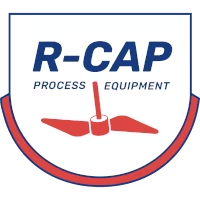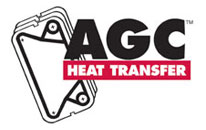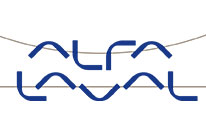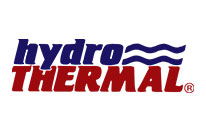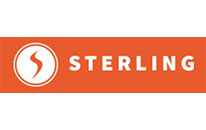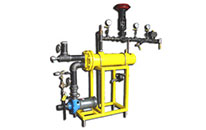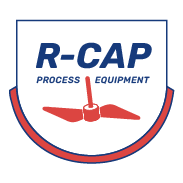Heat Transfer Systems
What Are Heat Exchangers?
A heat exchanger is a type of heat transfer system that transfers thermal energy between two solids, two liquids, two gases, or a combination of these. Such thermal transfer systems are used for industrial process heating, cooling, condensing, and evaporating for product manufacturing and other applications.
How Do They Work?
The short answer is it depends. Heat exchangers come in various models, all of which function differently. Depending on the particular type of heat exchanger in question, it may introduce the warm and cool mediums via a series of plates, tubes, or other mechanically designed equipment.
Why Are They Needed?
Heat exchangers conduct thermal transfer by heating, cooling, or maintaining the temperature of one media while utilizing another media of a different temperature. They also enhance efficiency and reduce costs.
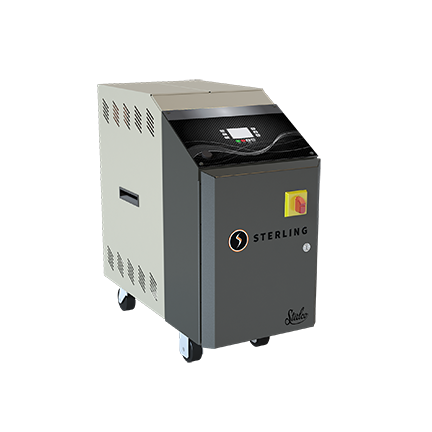
How Are Heat Exchangers Classified?
Contact
A product will either come into direct or indirect contact with media. Indirect contact heat transfer fluid systems separate the fluids with a wall or a tube.
Physical State
You can have a liquid and a liquid, a liquid and a gas, a liquid and a solid, or a solid and a gas.
Flow Arrangement
Flow arrangement refers to how the hot and cold fluids are arranged inside the heat exchanger. The three types of flow arrangement are counterflow, concurrent flow, and crossflow.
Design and Construction
Heat exchangers are designed and constructed with different materials for different applications.
Heat Exchanger Applications
Food and Beverage
- Heating
Companies in the food and beverage industry use heat exchangers to pasteurize their products. Pasteurization sterilizes juices and other beverages for consumption without stripping them of their natural ingredients.
- Cooling
Heating beer for too long reduces its signature hoppiness and accelerates the oxidation process, which often makes beer taste stale. Breweries use heat exchangers to cool the beer after pasteurization so it maintains its flavor.
Dairy
- Heating
Dairies use heat exchangers to make production more efficient and ensure hygienic products. These devices pasteurize products like milk, cheese, butter, and yogurt, removing natural microorganisms that are harmful for consumption. When pasteurization can’t occur right away, heat exchangers temporarily heat the milk to minimize bacterial growth and prolong the shelf life.
- Cooling
Pasteurized milk is not sterile for consumption. Therefore, it must be cooled immediately after pasteurization. This process prevents microbial growth and maintains the milk’s protein content.
Cosmetic
- Heating
Heat exchangers are used to heat cosmetic products of various viscosities, including lotions, creams, and foundations. Scrape surface and shell and tube heat exchangers are typically used for these applications.
- Cooling
Prolonged heat causes the ingredients in cosmetic products to separate. Heat exchangers cool these ingredients to bind them together and maintain their efficacy.
Chemical
Some applications across industries involve the use of harsh chemicals. Heat exchangers used for these products must be made with chemical-resistant metals.
Pharmaceutical
Heat exchangers enable precise temperature control during drug formulation, sterilization, and purification in the pharmaceutical industry, ensuring product quality and compliance with regulatory standards.
Types of Heat Exchangers
1. Plate and Frame
Plate and frame heat exchangers indirectly transfer heat across large areas. Their metal plates are available in various designs, and the number of plates required depends on the application. These heat exchangers are available in three flow directions.
- Counterflow: A plate separates two fluids traveling in opposite directions to deliver optimal heat transfer.
- Concurrent flow: An even temperature is achieved by moving fluids in particular directions.
- Crossflow: Fluids move at opposing 90-degree angles.
2. Scrape Surface
Scrape surface heat exchangers use indirect heat transfer. A product travels through a tube, and blades rotate on the mutator shaft inside the tube to extract the product from the heat transfer wall. Heating or cooling media travels through a jacket surrounding the product. This separation of product and media is a distinct feature of indirect heat transfer systems such as this.
Scrape surface heat exchangers are used for heating, cooling, crystallization, pasteurization, sterilization, and gelatinization and come in three types.
- Concentric: The mutator shaft is mounted in the middle of the tube. This is the most common model.
- Eccentric: The mutator shaft is mounted partially off-center in the tube. This type is primarily used for viscous and sticky products because it minimizes product buildup.
- Oval: The tube features an oval cross-section where blades move more rapidly to obstruct product buildup. This type is used for highly viscous products.
3. Shell and Tube
Shell and tube heat exchangers use indirect heat transfer and feature a series of tubes that contain smaller tubes. They’re used for applications with medium viscosity, like beverages, drinking yogurts, vegetable purees, and sauces. Common processes include heating, cooling, pasteurization, sterilization, melting, and condensing. These are the four types.
- Double tube: This type contains two concentric inner and outer tubes. The product travels through the inner tube, and media flows between the two tubes.
- Triple tube: This type contains three concentric tubes. Product travels between the innermost and outermost tubes.
- Quadruple tube: This type contains four concentric tubes. Product travels between the second and third tubes.
- Multitube designs: This type contains several small tubes that align with one larger, outer tube. Product travels through the smaller interior tubes.
4. Direct Steam Injection
These heat exchangers transfer steam to liquid. They heat liquids and slurries of various viscosities by metering the flow of high-velocity steam. This model is energy efficient, low maintenance, and durable.
Learn More
5. Temperature Control Units
Temperature control units are built for water and oil heat transfer. They’re used for heating and maintaining the temperature of jacketed vessels like mix tanks or storage tanks.
Learn More
6. Hot Water Sets
How water sets offer precise temperature heating, control, and regulation of water and come in warriors mounting options.
Why Choose R-Cap Process Equipment?
Whatever your application, we have the heat transfer solutions you need to enhance efficiency and save money throughout the production process. With more than 30 years of industry experience, you can count on us to provide premium products that will last for years to come. Find the heat exchanger your business needs today.
